State Fair

Brief Synopsis
Cast & Crew
Walter Lang
Jeanne Crain
Dana Andrews
Dick Haymes
Vivian Blaine
Charles Winninger
Film Details
Technical Specs

Synopsis
The members of the Frake family bustle about their Brunswick, Iowa farm, making the final preparations for their annual trip to the state fair. Father Abel, who is entering his prize boar, Blue Boy, in the hog contest, confers with mother Melissa, who is considering adding brandy to her mincemeat entry, while son Wayne practices his ring tossing and daughter Margy frets over her restlessness. Margy's sincere but boring beau, Harry Ware, tells Margy that he cannot accompany her to the fair, and when he proposes, she stalls by promising him an answer upon her return. Wayne's childhood sweetheart, Eleanor, cannot attend either, and both Wayne and Margy are melancholy as they leave. After the Frakes set up a temporary home in a nearby trailer park, Wayne goes to the fairgrounds, where he attempts to humiliate the ring toss barker, whose unfair tactics cost Wayne eight dollars the previous year. The barker threatens to call the police, but a beautiful young woman, claiming to be the police chief's daughter, persuades him to return Wayne's money. Wayne is enchanted by the woman, but she states that she is late for an appointment and leaves. Meanwhile, Margy makes the acquaintance of reporter Pat Gilbert, who is covering the fair for the Des Moines Register , and the couple spend a happy day together. That night, Margy and Pat again meet at the fairgrounds, and Wayne discovers that his mystery woman is singer Emily Edwards. Wayne persuades Emily to dance with him, and she soon returns his affections. The next day, as Abel broods over Blue Boy, who has become enamoured of a sow named Esmerelda, Melissa attends the judging of the pickles and mincemeat. Despite competition from a longtime rival, Melissa wins a prize for pickles and a special award for her mincemeat, to which both she and Abel secretly added brandy. In the evening, Wayne attends a birthday party given by Emily for Marty, a fellow singer, and is angered by Marty's snobbish insinuations about him. Emily calms Wayne down, and the couple spend the night declaring their love, as do Margy and Pat. Knowing that he is not the sort of fellow to settle down, Pat warns Margy that he is no good for her, but she vows that she will marry no one but him. Wayne and Margy arrive home at dawn, and that afternoon at the Swine Pavillion, Abel is triumphant when Blue Boy wins his contest, despite his continued lovesickness for Esmeralda. In the evening, Pat receives word that he has been offered an important job in Chicago and leaves without saying goodbye to Margy. The young woman is crushed by Pat's disappearance, and Wayne's romance also ends when he learns that Emily is married, although she is separated from her husband. The next day, after the Frakes return to their farm, Abel tries to collect on a wager he made with his pessimistic friend, Dave Miller, that the family members would all have a good time. Miller is reluctant to pay because of Wayne and Margy's sad faces, but when Margy receives a call from Pat, who says that he is driving to Brunswick to take her with him to Chicago, she declares that this year's fair was the best ever. Soon after Margy has dashed off, Wayne and Eleanor, who have reunited, cuddle as they drive past Margy and Pat embracing on the side of the road.

Director

Walter Lang
Cast
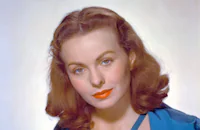
Jeanne Crain

Dana Andrews

Dick Haymes

Vivian Blaine

Charles Winninger

Fay Bainter
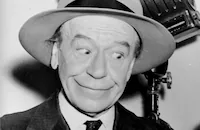
Donald Meek
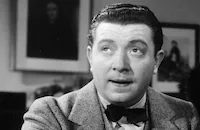
Frank Mchugh
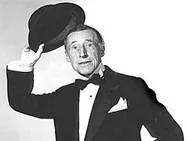
Percy Kilbride

Henry Morgan

Jane Nigh
William Marshall
Phil Brown
Paul Burns
Josephine Whittell

Paul Harvey
Emory Parnell
Tom Fadden
William Frambes
Steve Olsen
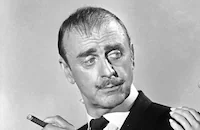
John Dehner
Harlan Briggs
Alice Fleming

Will Wright
Ralph Sanford
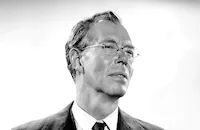
Walter Baldwin
Neal Hart
Almira Sessions
Virginia Brissac
Earle S. Dewey
Wheaton Chambers
Harry Depp
Francis Ford
Ray Barons
Cathy Downs
Phil Tead
Louis Manley
Les Stanford
Diane Florentine
Frank Scannell
Clancy Cooper
Eddie Dunn
Vie Mansfield

Coleen Gray
Jo-carroll Dennison
Margo Woode
Joe Bernard
Jim Toney
Minerva Urecal
Frank Dae
Nolan Leary
Frank Mayo
Vanita Wade
Esther Brodelet
Mary Stewart
Hal Taggart
John Roche
Russell Ash
Al Gallagher
Warren Lane
Jack Kenyon
Buddy Moore
Janet Graves
Buddy Robinson
Lorraine Collier
Larraine Reimer
Ed Stanbridge
Charles Owens
Mario Salaneschi
Jean Mcclure
Dorothy Bailer
Eleanor Peterson
Lee Bailey
Jack Ross
Hal Aldridge Iii
Jack Jackson
Mary Manners
Crew
Lewis Creber
Bernard Freericks
Gaston Glass
Paul Green
Ralph O. Hammeras
Oscar Hammerstein Ii
Oscar Hammerstein Ii
Roger Heman
Charles Henderson
Renè Hubert
Natalie Kalmus
R. A. Klune
Sonya Levien
Thomas Little
Paul Macpherson
Bud Mautino
May Morris
Richard Mueller
Alfred Newman
Ben Nye
Al Orenbach
Hermes Pan
William Perlberg
Edward Powell
Frances C. Richardson
Joe Rickards
Dave Robel
Richard Rodgers
Fred Sersen
Leon Shamroy
Murray Spivack
Vinton Vernon
J. Watson Webb
Lyle Wheeler

Film Details
Technical Specs

Award Wins
Best Song
Award Nominations
Best Score
Articles
State Fair (1945)
Rodgers and Hammerstein liked the original film, and the idea of doing a musical remake, but not the idea of going to California to write it. So Fox agreed to let the team work at home. As Rodgers wrote in his memoirs, "the story, which was set in Iowa, could be filmed in California, while the music and lyrics would be written in Fairfield, Connecticut, and Doylestown, Pennsylvania." Hammerstein also wrote the screenplay for the film. State Fair (1945) would be Rodgers and Hammerstein's only musical written directly for the screen. The score includes several songs which became hits, including "It's a Grand Night for Singing," "That's For Me," and "It Might as Well Be Spring," which won an Academy Award for Best Song. Rodgers recalls in his memoirs that Hammerstein had originally planned to write a song about a girl with spring fever, but discovered that state fairs are usually held in fall. "This gave him a far more original idea: the self-portrait of a girl who shows all the symptoms of spring fever, even though `it isn't even spring.'"
In spite of wartime restrictions, State Fair was given a lavish Technicolor production, and an excellent cast. One of Fox's most promising young ingénues, Jeanne Crain was cast as Margy, although she was not a singer. State Fair made her a star. Crain's singing voice was dubbed by Louanne Hogan, who was put under contract just to dub Crain's vocals. Hogan would also sing Crain's songs in Margie (1946) and Centennial Summer (1946). Co-star Dana Andrews' voice was also dubbed, although he was a trained opera singer. Andrews later claimed that the studio didn't know he was a singer, and he didn't tell them because he figured the singer hired to be his voice needed the job.
Dick Haymes, on the other hand, was a popular crooner who had sung with the Harry James, Benny Goodman, and Tommy Dorsey bands and had his own radio show. State Fair was one of his first leading film roles. Vivian Blaine, who played Haymes' love interest, was a former band and nightclub singer who had been a Fox contract player for several years. But her biggest success would come on the stage as the original Miss Adelaide in Guys and Dolls (1950), a role she would reprise in the 1955 film version. Dependable character actors Charles Winninger and Fay Bainter rounded out the State Fair cast as the Frake parents. The film was a big success, and after it was released, attendance at state fairs around the country suddenly increased.
Years later, when Fox decided to remake the film, they increased the scope of the film and the budget. Accordingly, the new version of State Fair (1962) was set in Texas instead of Iowa, and boasted several new songs. Oscar Hammerstein had died in 1960, so Richard Rodgers wrote the lyrics as well as the music for the new songs. But critics agreed that bigger was definitely not better, and trashed the remake which starred Pat Boone and Ann-Margret. In 1995, the Rodgers and Hammerstein organization produced a stage version of State Fair, which used as its source the screenplay and score of the 1945 version, and interpolated several additional Rodgers and Hammerstein songs from other musicals. The stage version premiered at the Iowa state fair, and toured for several months before premiering on Broadway. But for most people, the 1945 film musical is considered the best version of State Fair.
Producer: William Perlberg
Director: Walter Lang
Screenplay: Oscar Hammerstein II, Sonya Levien, Paul Green, based on the novel by Philip Stong
Art Direction: Lyle Wheeler, Lewis Creber
Cinematography: Leon Shamroy
Costume Design: Rene Hubert
Editor: J. Watson Webb
Music: Richard Rodgers, music, Oscar Hammerstein II, lyrics
Cast: Jeanne Crain (Margy Frake), Dana Andrews (Pat Gilbert), Dick Haymes (Wayne Frake), Vivian Blaine (Emily Edwards), Charles Winninger (Abel Frake), Fay Bainter (Melissa Frake), Donald Meek (Hippenstahl), Frank McHugh (McGee), Percy Kilbride (Miller).
C-100m.
by Margarita Landazuri

State Fair (1945)
State Fair (60th Anniversary Edition) - State Fair - Two Versions on One DVD
State Fair follows the fortunes of the Frake family as they visit the fair along with their pet pig Blue Boy, who father Abel (noted character actor Charles Winninger) is hoping will win the blue ribbon. His wife Melissa (Fay Bainter) entertains similar hopes for her home-made pickles and run-spiked mince sauce. They are accompanied by their son Wayne (pop singer Dick Haymes) and daughter Margy (Jeanne Crain), both of whom are ready for love.
Margy is the first to find romance in the fairgrounds in a chance encounter with slightly-jaded reporter Pat Gilbert (Dana Andrews), who charms Margy while covering the fair for the local weekly, and hoping for a dream job in the big city. At the same time, Wayne finds a possible flame in sultry singer Emily Edwards (Vivian Blaine), the gorgeous cherry blond with a secret past that she keeps hidden from him. Both Margy and Wayne seem destined for romantic disaster when Pat is called away without warning or time to explain to Margy, and when Emily reviews her shattering secret, which opens Wayne's eyes to how different their lives are worlds apart. But of course, in true 40s musical style, somehow everything is able to work out happily for parents and children alike.
State Fair is a pleasant if not particularly distinguished diversion, sparked by splendid performances by a cast of old pros and new stars. Crain is at her loveliest and most appealing. Her singing voice was dubbed by Louanne Hogan, a match that would prove so seamless that Hogan would end up with a contract to provide her singing voice in other films (shades of Singin' in the Rain!). Dana Andrews rounds off his rough edges to give a charming performance as Pat, and both Haymes and Blaine fill their roles beautifully. But the film is nearly stolen by the winning pairing of Winninger and Bainter as the understanding (and understated) parents.
This would be Rogers and Hammerstein's only score written specifically for the screen, and while the music for State Fair doesn't match the emotional depth of their stage work, the team still managed to produce another pair of timeless standards with the lovely It Might as Well Be Spring, and the lilting It's a Grand Night for Singing.
The two-disc 50th Anniversary edition of the film includes the egregious 1962 remake starring Pat Boone as Wayne, Bobby Darin as Pat, and Ann-Margaret as the object of Wayne's affection. Screen musical legend Alice Faye came out of retirement after a sixteen year absence to take on the role of Melissa Frake, and through much of the film looks as if she wished she hadn't. The remake falters from the start with a flat prologue with Boone and his hometown girlfriend arguing about his race-car driving before giving way to the film's maddeningly memorable theme song (with which the original had the good sense to open). But the remake also includes such auspicious moments as Tom Ewell, as papa Frake, singing a love song to a pig (penned by Rodgers on his own for the film), and Ann-Margaret performing a dance on the fair stage that would've gotten her arrested at any state fair in the 60s.
Fox has provided excellent source material for the transfers of both films: the colors for the original really pop in true Technicolor style. The picture is clean and clear, marred only by a tendency for the flesh tones to be a bit over-ripe. The second film was shot with much more realistic colors, which are well-realized in the sharp, crisp, image of the transfer. The original film includes an audio commentary by film historian Richard Barrios and Tom Briggs, as well as a short featurette that serves as a shameless promotion for their stage version of the film. The remake includes an audio commentary by no less than Pat Boone himself!
For more information about State Fair, visit Fox Home Entertainment. To order State Fair, go to TCM Shopping.
by Fred Hunter
State Fair (60th Anniversary Edition) - State Fair - Two Versions on One DVD
Quotes
Biggest boar in the world, I bet.- Harry Ware
All depends on how you spell it.- Margy Frake
Trivia
Jeanne Crain's singing voice was dubbed by Louanne Hogan.
Notes
The film's title card reads, "Twentieth Century-Fox presents Rodgers and Hammerstein's State Fair." According to Hollywood Reporter news items, Mischa Auer was set for a "featured part," but he does not appear in the completed film. Other Hollywood Reporter news items noted that Maureen O'Hara and Kathryn Grayson were considered for the picture, and that Janet Blair was tested for the part of "Emily," which was originally "inked" for Alice Faye. Although other Hollywood Reporter news items include Marguerite Belle and Harvey Karels in the cast, their appearance in the completed film has not been confirmed. In November 1943, Hollywood Reporter announced that Twentieth Century-Fox was contemplating hiring Agnes DeMille as the film's dance director. According to information in the Twentieth Century-Fox Records of the Legal Department, located at the UCLA Arts-Special Collections Library, some sequences were shot on location at Russell Ranch, King Farm and Sherwood Forest, CA.
According to information in the MPAA/PCA Collection at the AMPAS Library, the Breen Office rejected two scripts, dated May 8, 1944 and November 16, 1944, due to "the inescapable suggestion of an illicit sex affair between Emily and Wayne." During a conference between producer William Perlberg and PCA officials, it was agreed that "there would be no suggestion of any sex affair between Emily and Wayne from the reactions of either of these or from the father." The legal records reveal that the studio received written permission from Ronald Colman, Charles Boyer and Bing Crosby to include impersonations of their voices in the song "It Might as Well Be Spring." Modern sources state that Lou Ann Hogan was the singing voice double for Jeanne Crain. The picture received an Academy Award nomination for Best Scoring of a Musical Picture, and Rodgers and Hammerstein were awarded an Oscar for Best Song for "It Might as Well Be Spring."
Twentieth Century-Fox previously filmed a non-musical version of Phil Stong's novel in 1933, directed by Henry King and starring Will Rogers, Janet Gaynor and Lew Ayres. In 1962, the studio again remade State Fair as a musical featuring the original Rodgers and Hammerstein's songs, as well as additional songs by Rodgers. The 1962 film was directed by José Ferrer and starred Pat Boone, Ann-Margret and Alice Faye (see AFI Catalog of Feature Films, 1931-40; F3.4304 and AFI Catalog of Feature Films, 1961-70; F6.4688). On June 24, 1946, Dick Haymes, Jeanne Crain and Vivian Blaine reprised their roles for a Lux Radio Theatre broadcast of the story. The Hallmark Playhouse broadcast a radio presentation of the story on August 26, 1948. The 1945 film was broadcast on television under the title It Happened One Summer, and in 1976, CBS aired a one-hour pilot for a proposed series, based on Stong's novel and co-produced by Frankovich-Self Productions and Twentieth Century-Fox Television. The pilot was not picked up, however, and the series was not produced. Rodgers and Hammerstein's musical version of the story, which was the only score that they wrote directly for the screen, opened on Broadway on March 27, 1996.















